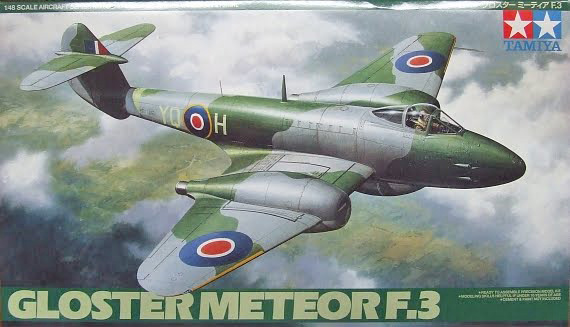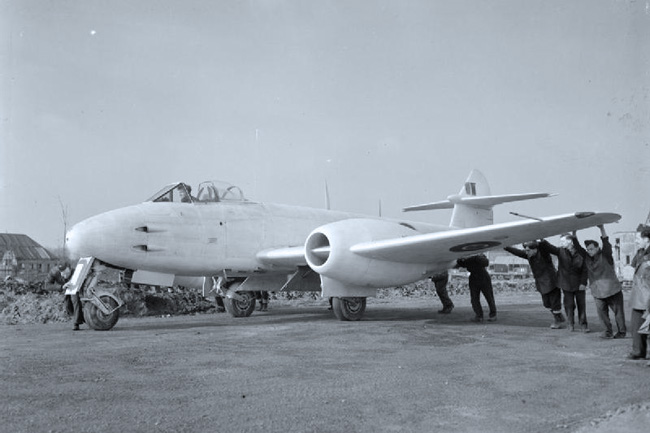
Feature Article with Geoff Coughlin
Early jets have always had an attraction for me and when Tamiya released their F.1 and F.3 kits, the latter just had to be built (well, both did actually but that’s for another day!).
What inspired this project is the following photograph when I saw it a number of years ago as I researched the F.3…

Photo: Royal Air Force- 2nd Tactical Air Force, 1943-1945. White-painted Gloster Meteor F Mark III, EE239 ‘YQ-Q’, of No. 616 Squadron RAF Detachment is pushed to its dispersal point at B58/Melsbroek, Belgium. A flight of Meteors was detached from 616 Squadron to 2nd TAF to provide air defence against the Messerschmitt Me 262, being joined by the whole Squadron in March 1945. During the initial deployment, the Meteors were painted white to aid identification by other Allied aircraft. Courtesy IWM
Take a closer look at this image and you’ll see that the white has subtle variations, including thin changes in tone around the vertical ribs in the airframe and I’d like to try and capture that with this build – we’ll see!
The Tamiya kit
I’ve built both the F.1 and now this F.3 and they are lovely kits to build – good engineering and a great subject make for an attractive model when you’re done. At the time of their release there was some criticism of the fact that the F.1 came out with the overawing speed brakes included and these (I believe) were only fitted to the F.3 and later models. The good news is that the air brakes do make for a bit of extra interest on your finished model if slightly extended, even if this wasn’t Standard Operating Procedure (SOP).
The other nice feature is that the engines are included and you can detail these up and just drop the engine covers in on top if you want to have the bays closed – a truly interchangeable option that’s great for display purposes.